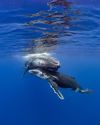Prøve GULL - Gratis
Finding Harmony Between Humans And Elephants
ASIAN Geographic
|AG 159
How one non-profit organisation is encouraging alternative crops to reduce human-elephant conflict in Thailand

When elephants enter her farm, Roengrom “Rom” Amsamarng runs away and spreads the news of elephant presence to neighbouring farms. To Rom, a Thai farmer, elephants threaten her safety and economic livelihood. In the village of Ruam Thai, where Rom lives, elephants leave protected areas and venture into pineapple farms, damaging crops that farmers depend on for a living.
“If it’s too late at night, I won’t go out or even move,” Rom says. “If the elephant is really close to me, I won’t move, but if the elephants are far away, I will run as far as I can.”
This is an example of human–elephant conflict, a problem in all 13 countries inhabited by Asian elephants, including Cambodia, Thailand and Sri Lanka. In Thailand, human–elephant conflict, or HEC, is increasing. Research suggests this is the result of shrinking Thai forestland. Between 2012 and 2017, 45 humans and 25 elephants died through HEC, according to Thai newspaper The Nation.
Ruam Thai village is working to solve this problem. A group of farmers, researchers and volunteers is experimenting with how to make the plantations less appealing to elephants.
Most Ruam Thai village residents’ main source of income is from agriculture, and 70 percent of these residents plant pineapple. The village in the southwestern province of Prachuap Khiri Khan, about 250 kilometres south of Bangkok, shares an unfenced border with Kuiburi National Park, home to more than 300 wild elephants.
By helping farmers transition to planting different crops instead of pineapple, Bring The Elephant Home, or BTEH, is “working with elephant psychology”, as BTEH’s Thailand country director Ave Owen calls it, to disincentivise them from coming into the farms.
Denne historien er fra AG 159-utgaven av ASIAN Geographic.
Abonner på Magzter GOLD for å få tilgang til tusenvis av kuraterte premiumhistorier og over 9000 magasiner og aviser.
Allerede abonnent? Logg på
FLERE HISTORIER FRA ASIAN Geographic

ASIAN Geographic
Cerulean Colossus
A little introduction to the world's biggest fish
6 mins
AG 169

ASIAN Geographic
Tales from the Black Sea
A glimpse of hope
7 mins
AG 169

ASIAN Geographic
The Magnificent Seven
There are seven marine turtle species worldwide, three of which are listed as “Endangered” or “Critically Endangered”. Each have their own habitats, needs and peculiarities, but how much longer will we be able to enjoy their presence on our planet?
4 mins
AG 169
ASIAN Geographic
Ocean Giants
Understanding the enigmatic mantas and other mobula rays
9 mins
AG 169

ASIAN Geographic
10 Top Diving Experiences in the Philippines
The Philippines is renowned worldwide for its breathtaking marine biodiversity, crystal-clear waters, and vibrant coral reefs. Boasting over 7,000 islands, the archipelago offers countless diving spots that cater to beginners and seasoned divers alike. Whether you're seeking thrilling encounters with sharks, exploring world-class wrecks, or immersing yourself in colourful coral gardens, the Philippines has something extraordinary to offer. Here are 10 of the best diving experiences you should add to your bucket list.
1 min
AG 169

ASIAN Geographic
Introducing Hippocampus Unravelling the Seahorse
Seahorses are an elusive species that turn divers giddy with excitement. But what is it about them that fascinates people so much? Quite often, throughout my work and travels, I hear divers say, \"I don't like sharks – they're scary\" or \"Nudibranchs are boring\", but can you ever recall a time when you've heard a diver say that they don't like seahorses? I mean, what is there not to like about this mythical little creature?
3 mins
AG 169

ASIAN Geographic
Go for the Glow
The science behind coral colours
2 mins
AG 169

ASIAN Geographic
Revealed Silver
Known in Latin as argentum, originating from the Sanskrit word argunas meaning \"shining\", silver is often an overlooked metal in comparison to gold, though it has properties that make it a unique and special element.
2 mins
AG 166

ASIAN Geographic
Celebrating the 2023 Rolex Awards for Enterprise Laureate: Liu Shaochuang
As a part of the Perpetual Planet Initiative, the Rolex Awards for Enterprise continues to expand the initiative’s growing portfolio, supporting exceptional individuals with innovative projects in areas such as the environment, science and health, applied technology, cultural heritage, and exploration.
2 mins
AG 166

ASIAN Geographic
The Treasures of Tahiti and the Journey of Giants
For decades, French Polynesia's beguiling islands have adorned travel brochures, alluring honeymooners with turquoise lagoons, overwater bungalows, and lush volcanic peaks. Some 7,000 kilometres from its closest neighbours, and spread over five main island groups, the French territory's real treasures are not just what you see in the splashy brochures. Get ready for untamed, wild, ocean encounters.
6 mins
AG 166
Translate
Change font size

